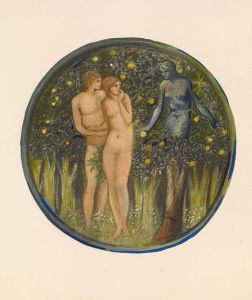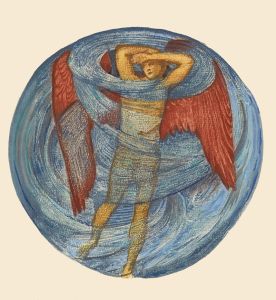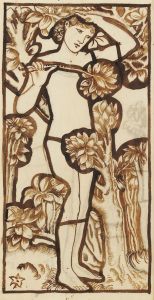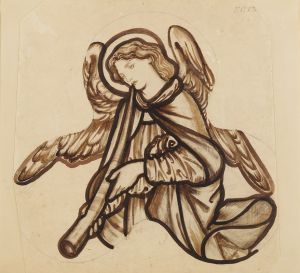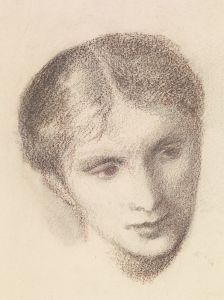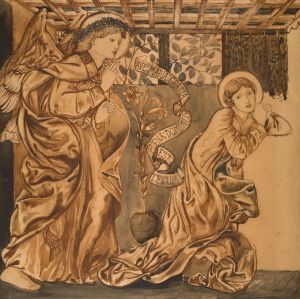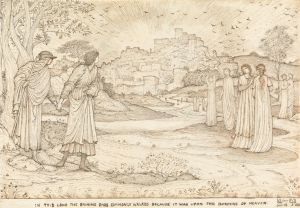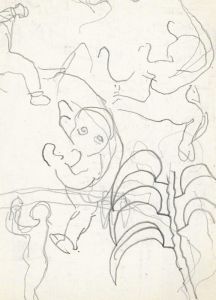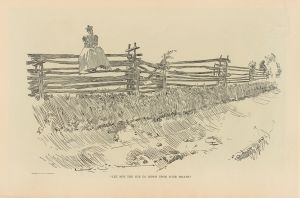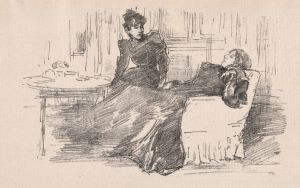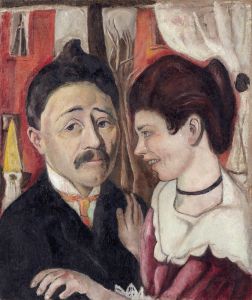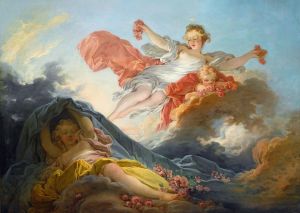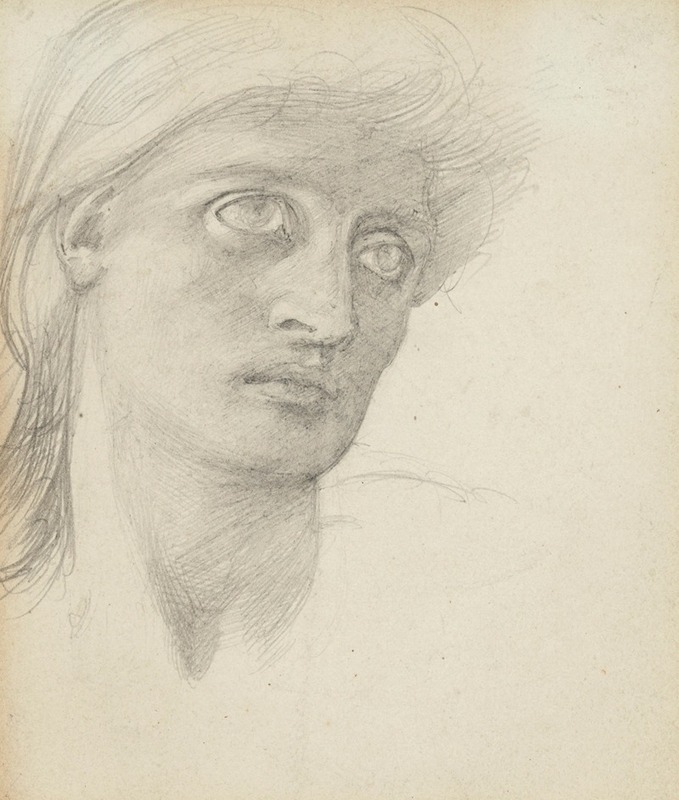
Heady study of Love for ‘The Triumph of Love over Oblivion’
A hand-painted replica of Sir Edward Coley Burne-Jones’s masterpiece Heady study of Love for ‘The Triumph of Love over Oblivion’, meticulously crafted by professional artists to capture the true essence of the original. Each piece is created with museum-quality canvas and rare mineral pigments, carefully painted by experienced artists with delicate brushstrokes and rich, layered colors to perfectly recreate the texture of the original artwork. Unlike machine-printed reproductions, this hand-painted version brings the painting to life, infused with the artist’s emotions and skill in every stroke. Whether for personal collection or home decoration, it instantly elevates the artistic atmosphere of any space.
Sir Edward Coley Burne-Jones was a prominent British artist associated with the Pre-Raphaelite Brotherhood, a movement that sought to return to the detail, intense colors, and complex compositions of Quattrocento Italian art. One of his notable works is "The Triumph of Love over Oblivion," a painting that exemplifies his fascination with mythological and allegorical themes.
"The Triumph of Love over Oblivion" is a testament to Burne-Jones's skill in blending romanticism with symbolism. The painting, like many of his works, is characterized by its intricate detail and the ethereal quality of its figures. Burne-Jones often drew inspiration from classical mythology, medieval romance, and literature, and this piece is no exception. The theme of love conquering oblivion is a powerful allegory, suggesting the enduring nature of love against the inevitable passage of time and the forgetfulness that it brings.
In this painting, Burne-Jones employs a rich palette and meticulous attention to detail to convey the narrative. The figures are rendered with a delicate grace, typical of his style, and the composition is carefully balanced to draw the viewer's eye across the canvas. The use of light and shadow adds depth and dimension, enhancing the emotional impact of the scene.
Burne-Jones was known for his ability to convey complex emotions through his art, and "The Triumph of Love over Oblivion" is a prime example of this talent. The expressions and postures of the figures communicate a sense of longing and transcendence, inviting viewers to reflect on the themes of love, memory, and mortality. The painting's allegorical nature allows for multiple interpretations, making it a subject of enduring interest for art historians and enthusiasts alike.
The artist's work was heavily influenced by his association with the Pre-Raphaelite Brotherhood and his close friendship with William Morris, a fellow artist and designer. Together, they sought to revive the craftsmanship and beauty of medieval art, and this influence is evident in Burne-Jones's detailed and decorative style. His paintings often feature elongated figures, intricate patterns, and a dreamlike quality that sets them apart from the more realistic art of his contemporaries.
"The Triumph of Love over Oblivion" reflects Burne-Jones's belief in the transformative power of art and its ability to convey profound truths. His work continues to be celebrated for its beauty, emotional depth, and technical mastery. As with many of his paintings, this piece invites viewers to lose themselves in its narrative and explore the timeless themes it presents.
While specific details about the creation and exhibition history of "The Triumph of Love over Oblivion" may not be extensively documented, the painting remains an important part of Burne-Jones's oeuvre. It exemplifies his artistic vision and his contribution to the Pre-Raphaelite movement, which sought to challenge the conventions of Victorian art and inspire a renewed appreciation for beauty and imagination.





